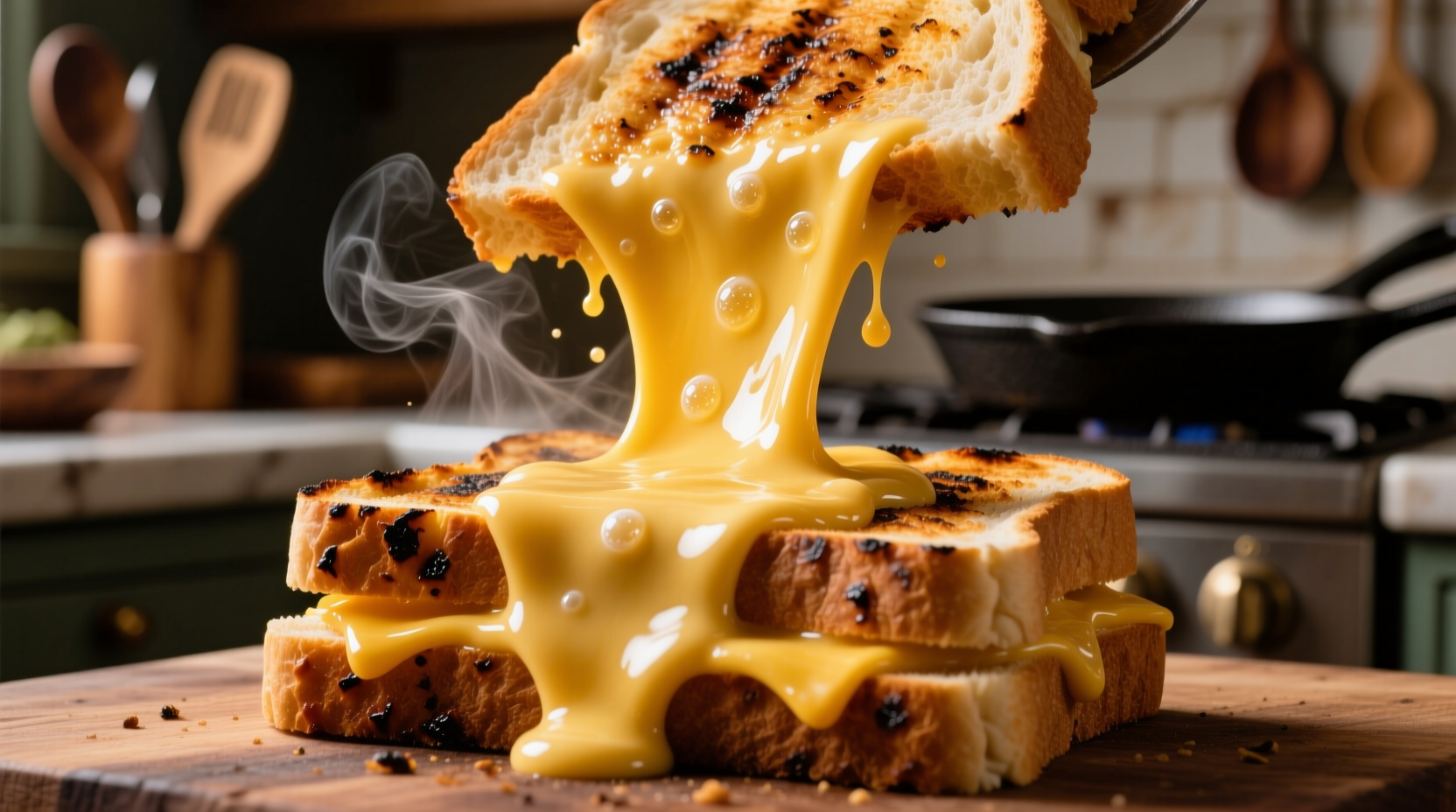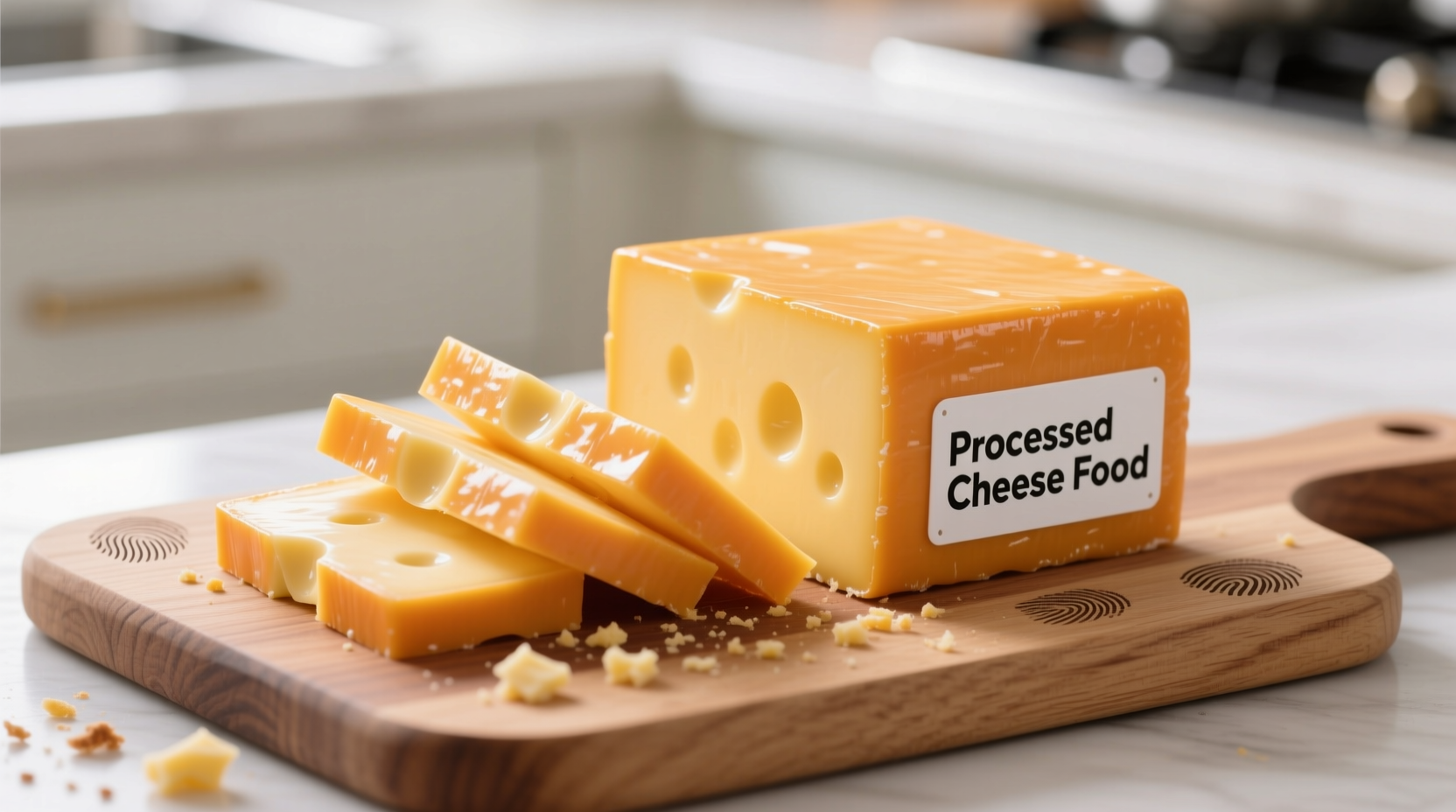Discover exactly what processed cheese food is, how it's made, and why it behaves differently than natural cheese in your cooking. This comprehensive guide reveals the science behind processed cheese, its nutritional profile, and practical tips for using it effectively in everyday meals.
The Science Behind Processed Cheese: What Sets It Apart
Processed cheese food isn't "fake" cheese—it's a carefully engineered dairy product that solves specific culinary challenges. When natural cheeses melt, their proteins and fats separate, creating an oily, uneven texture. Processed cheese solves this problem through a precise manufacturing process developed in the early 20th century.
The key difference lies in the emulsification process. Natural cheeses contain casein proteins that clump together when heated, forcing out fat. Processed cheese incorporates sodium citrate or similar emulsifying salts that bind to the casein molecules, preventing separation and creating that signature smooth melt you expect from grilled cheese sandwiches or cheeseburgers.
Processed Cheese Timeline: From Laboratory Innovation to Kitchen Staple
The story of processed cheese begins in 1911 when Swiss cheese maker Walter Gerber discovered that adding sodium citrate to melted Emmental cheese created a smooth, homogeneous product that didn't separate. This innovation solved a practical problem—cheese often spoiled during long Alpine winters.
By 1916, James L. Kraft applied similar principles in North America, patenting a method for processing cheese that prevented spoilage during cross-country train shipments. During World War II, processed cheese became a military staple due to its shelf stability and consistent nutrition. The 1950s saw the introduction of individually wrapped cheese slices, revolutionizing American sandwich culture.
Processed vs. Natural Cheese: Key Differences at a Glance
| Characteristic | Processed Cheese | Natural Cheese |
|---|---|---|
| Production Method | Blended natural cheeses + emulsifiers heated to 150-180°F | Curdled milk aged for weeks to years |
| Melting Behavior | Smooth, uniform melt without separation | Can become greasy or stringy when melted |
| Shelf Life | 6-12 months unopened, 2-3 weeks after opening | Varies by type (weeks to years) |
| Flavor Consistency | Identical batch to batch | Changes with age and storage conditions |
| Moisture Content | Controlled (typically 40-50%) | Natural variation (30-60%) |
Understanding Processed Cheese Categories
The FDA regulates processed cheese products under 21 CFR 133, defining specific categories based on cheese content and moisture levels:
- Processed Cheese - Contains at least 51% natural cheese with maximum 43% moisture
- Processed Cheese Food - Contains 51% cheese but allows more moisture (max 44%) and additional ingredients
- Processed Cheese Spread - Higher moisture content (max 60%) for easy spreading
- Imitation Cheese - Contains no dairy cheese (regulated under different standards)
When shopping, check labels carefully—products labeled "cheese product" or "cheese food" contain less actual cheese than those labeled simply "processed cheese."
When Processed Cheese Shines: Practical Applications
Processed cheese excels in specific culinary situations where natural cheese falls short:
- Grilled cheese sandwiches - Creates that perfect, stretchy melt without greasiness
- Cheese sauces - Stays smooth in macaroni and cheese or nacho cheese without separating
- Commercial food service - Provides consistent results across thousands of servings
- Extended shelf life needs - Ideal for camping, emergency supplies, or infrequent users
However, processed cheese has limitations. Food scientists at the University of Wisconsin's Center for Dairy Research note that processed cheese lacks the complex flavor development of aged natural cheeses. The emulsification process limits the Maillard reaction during cooking, resulting in less browning and caramelization. For cheese boards or dishes where cheese flavor should dominate, natural varieties remain superior.

Nutritional Profile: What's Inside Processed Cheese
According to USDA FoodData Central, a typical processed cheese slice (28g) contains:
- Approximately 100 calories
- 6-7 grams of fat (including 4g saturated fat)
- 3-4 grams of protein
- 150-300mg sodium (significantly higher than natural cheese)
- Calcium content similar to natural cheese
The higher sodium content serves multiple purposes—it enhances flavor, acts as a preservative, and helps with emulsification. Some manufacturers now offer reduced-sodium versions that maintain meltability through alternative emulsifier blends.
Quality Considerations When Choosing Processed Cheese
Not all processed cheeses deliver equal quality. Food technologists at the American Dairy Science Association recommend checking these factors:
- Cheese content - Higher quality products list "cheddar cheese" or "swiss cheese" as first ingredients
- Emulsifier type - Sodium citrate creates smoother texture than phosphates
- Additives - Avoid products with excessive stabilizers or artificial colors
- Melt test - Quality processed cheese should melt evenly without beading oil
For home cooks, the USDA's Dairy Products Laboratory suggests a simple test: place a slice between two crackers and microwave for 30 seconds. High-quality processed cheese will create a uniform, creamy layer without greasy spots.
Processed Cheese in Global Cuisine
While often associated with American fast food, processed cheese has found unique applications worldwide:
- Mexico - Queso fundido features melted processed cheese with chorizo
- Japan - Processed cheese appears in ramen and as topping for okonomiyaki
- India - Amul cheese slices have become pantry staples for sandwiches
- France - Even traditional cheese cultures use processed cheese in certain industrial applications
The global acceptance of processed cheese reflects its practical solution to universal culinary challenges—consistent melting and extended shelf life without refrigeration.
Common Questions About Processed Cheese Food
Understanding processed cheese helps you make informed choices in your kitchen. Whether you're a home cook or professional chef, knowing when to reach for processed cheese versus natural varieties can significantly impact your culinary results. The next time you're deciding between cheese options, consider the specific requirements of your dish—sometimes that perfectly meltable processed cheese is exactly what your recipe needs.











 浙公网安备
33010002000092号
浙公网安备
33010002000092号 浙B2-20120091-4
浙B2-20120091-4